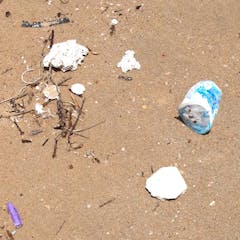
Artículos sobre ocean garbage patches
Mostrando todos artículos

Researchers even found textile fibres in very remote lakes with limited human presence.

An estimated 8 million metric tons of plastic waste enters the ocean each year – equivalent to dumping in a garbage truckload of it every minute. A new report calls on the US to help stem the deluge.

New research suggests that an effective way to locate and track large concentrations of microplastics in the ocean could be from high in the sky.

Great areas of rubbish – known as ‘garbage patches’ – are known to form in the Pacific and Atlantic oceans, but not the southern Indian Ocean. Why is that?

Everyone knows that plastic waste is an environmental problem. So let’s get creative with it.

After making worldwide headlines with the story of the Pacific “garbage island”, researchers were sent a photo of the same beach, white sand free of litter, as recently as 1992.

Thousands of seabirds die every year from consuming plastic trash in the oceans. But why do they eat plastic? New research shows that it produces odors that help some species find prey.

Refunds for drink bottles and cans get litter out of the environment – but industry remains opposed.

New method tallies microplastics in southern oceans, yielding a total that’s 37 times higher than previous estimates.

Splitting the Goods and Services Tax in two, and taxing goods at a higher rate, would help to reflect the extra environmental damage done by products that are bought and later thrown in the rubbish.

By 2050, 99% of the world’s seabird species will be accidentally eating plastic, unless we take action to clean up the oceans. And some of the highest risk to wildlife is in the Southern Ocean off Australia.

We dump more plastic into the ocean each year than we’ve been able to find. New research says much of it is lurking just below the waves.

You might have heard the oceans are full of plastic, but how full exactly? Around 8 million metric tonnes go into the oceans each year, according to the first rigorous global estimate published in Science…

Most of us have littered at one time or another, and in the process we probably contributed to the enormous of amounts of plastic that enter the ocean every year, eventually ending up in one of the five…
